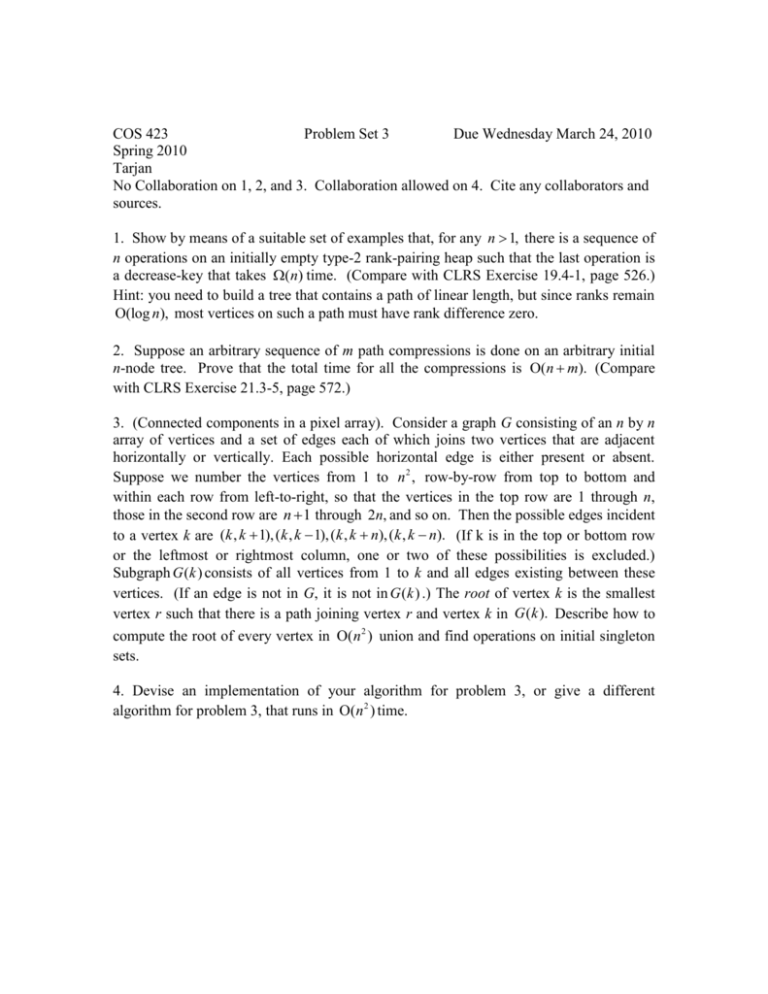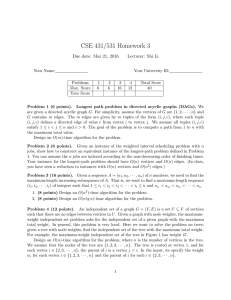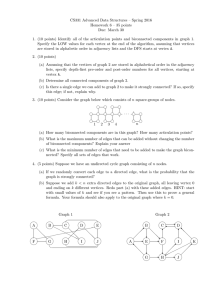COS 423 Problem Set 3 Due Wednesday March 24, 2010
advertisement

COS 423 Problem Set 3 Due Wednesday March 24, 2010 Spring 2010 Tarjan No Collaboration on 1, 2, and 3. Collaboration allowed on 4. Cite any collaborators and sources. 1. Show by means of a suitable set of examples that, for any n 1, there is a sequence of n operations on an initially empty type-2 rank-pairing heap such that the last operation is a decrease-key that takes (n) time. (Compare with CLRS Exercise 19.4-1, page 526.) Hint: you need to build a tree that contains a path of linear length, but since ranks remain O(log n), most vertices on such a path must have rank difference zero. 2. Suppose an arbitrary sequence of m path compressions is done on an arbitrary initial n-node tree. Prove that the total time for all the compressions is O(n m). (Compare with CLRS Exercise 21.3-5, page 572.) 3. (Connected components in a pixel array). Consider a graph G consisting of an n by n array of vertices and a set of edges each of which joins two vertices that are adjacent horizontally or vertically. Each possible horizontal edge is either present or absent. Suppose we number the vertices from 1 to n 2 , row-by-row from top to bottom and within each row from left-to-right, so that the vertices in the top row are 1 through n, those in the second row are n 1 through 2n, and so on. Then the possible edges incident to a vertex k are (k , k 1), (k , k 1), (k , k n), (k , k n). (If k is in the top or bottom row or the leftmost or rightmost column, one or two of these possibilities is excluded.) Subgraph G (k ) consists of all vertices from 1 to k and all edges existing between these vertices. (If an edge is not in G, it is not in G (k ) .) The root of vertex k is the smallest vertex r such that there is a path joining vertex r and vertex k in G (k ). Describe how to compute the root of every vertex in O(n 2 ) union and find operations on initial singleton sets. 4. Devise an implementation of your algorithm for problem 3, or give a different algorithm for problem 3, that runs in O(n 2 ) time.











